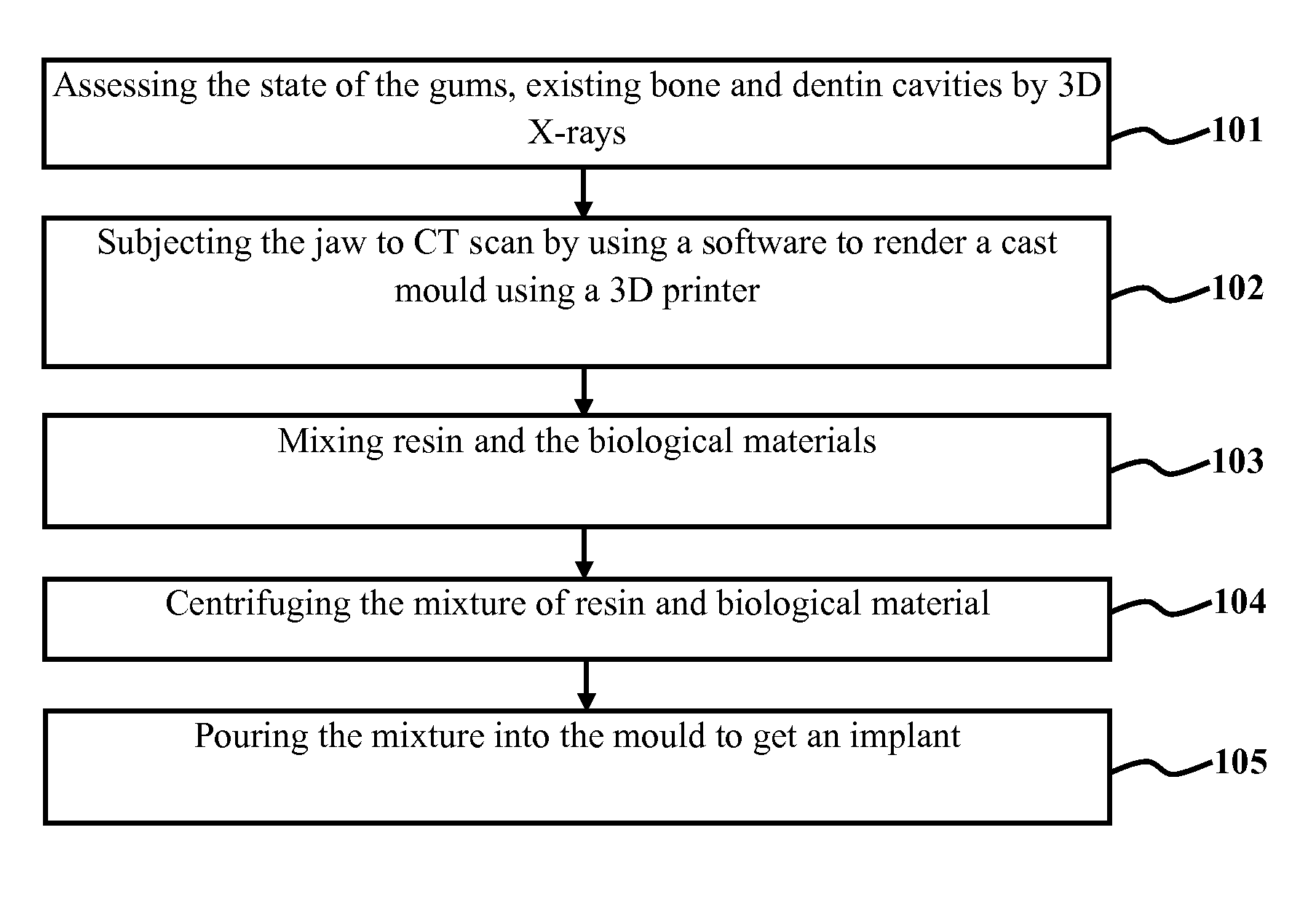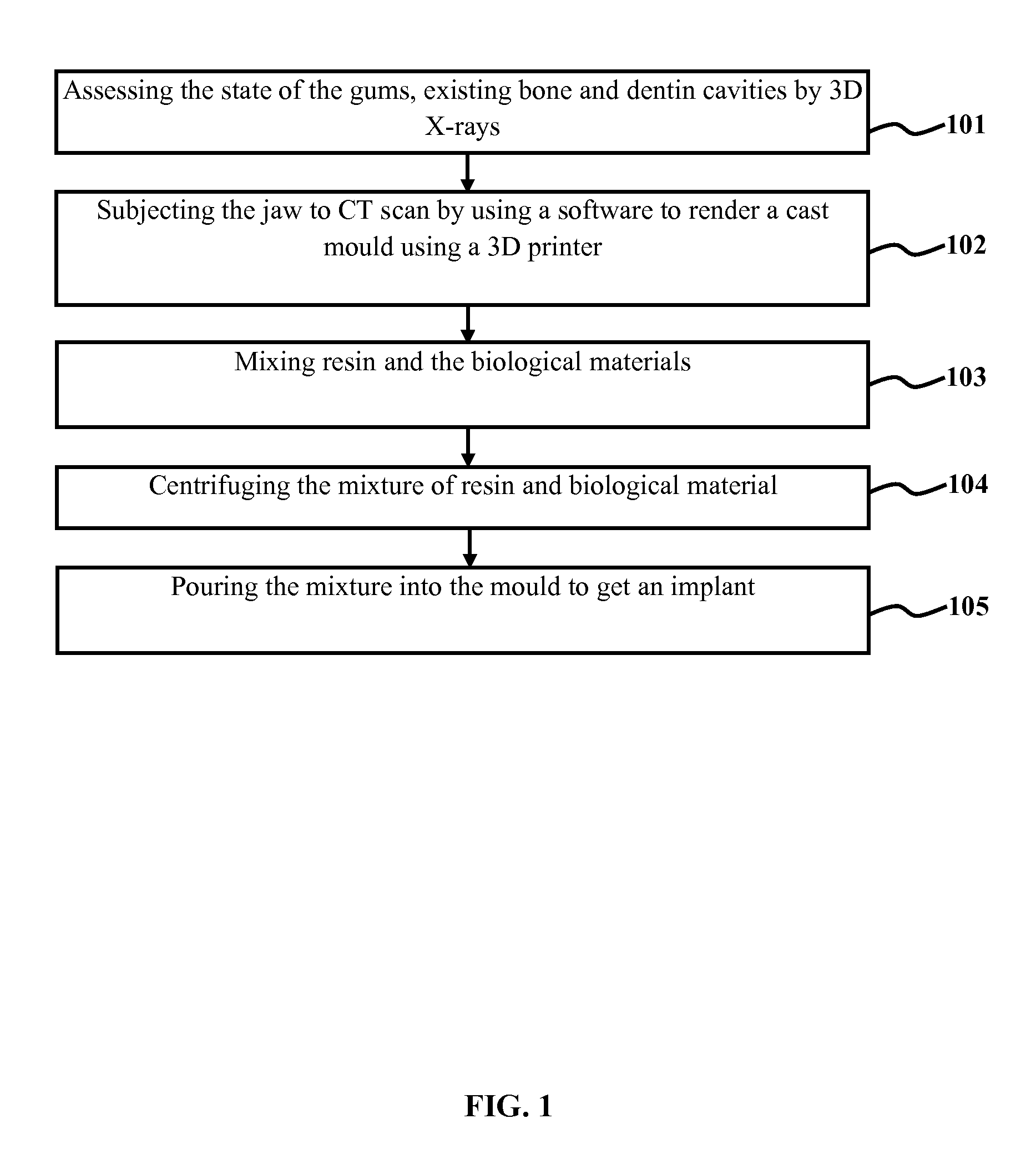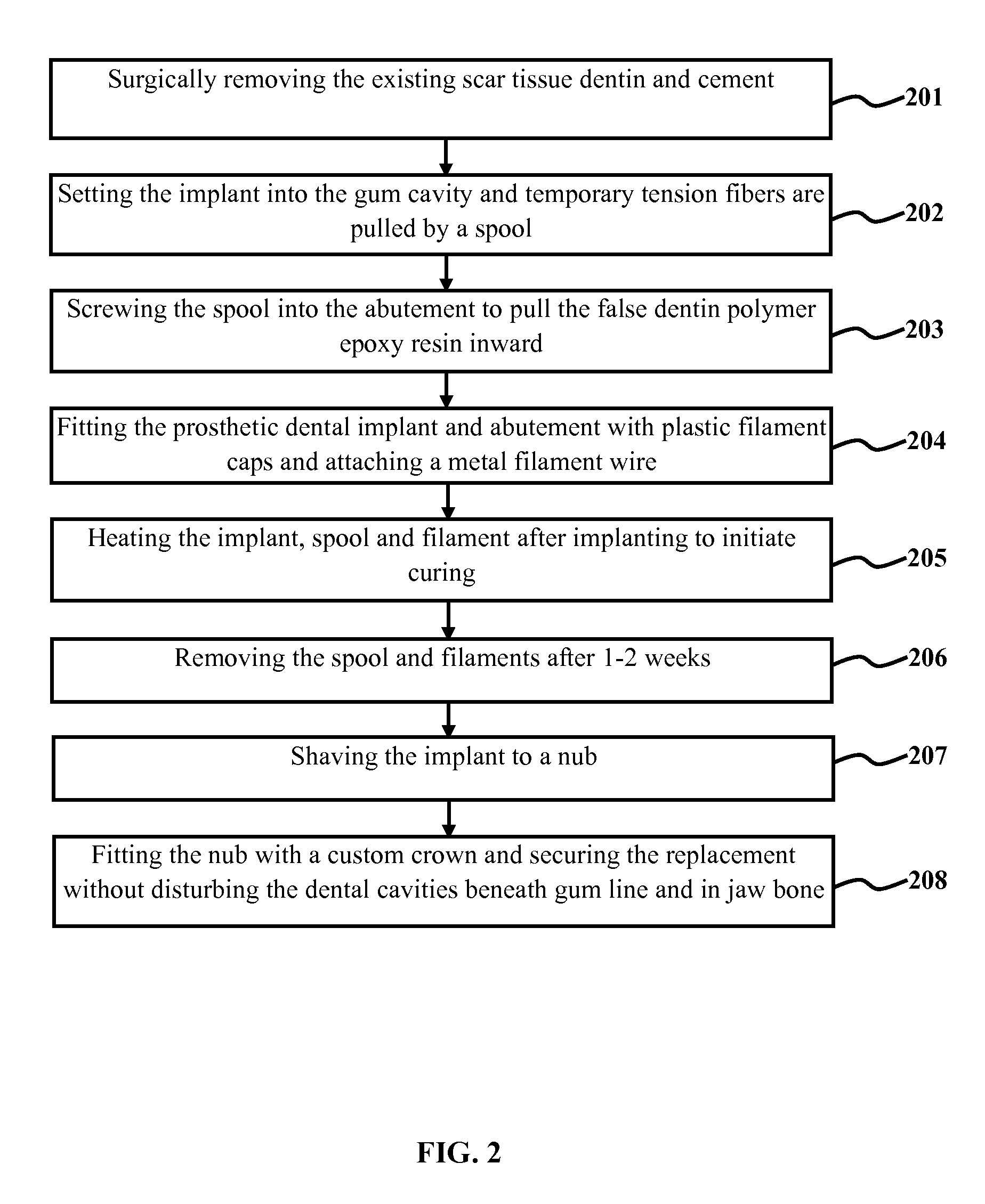Method for synthetic polymer tooth replacement
a synthetic polymer and tooth technology, applied in the field of dental health, can solve the problems of dental implants that require surgery, dental tissue damage, and modern day new dental implants, and achieve the effects of promoting scaring, promoting biological tissue knitting, and being easily moldable/flexibl
- Summary
- Abstract
- Description
- Claims
- Application Information
AI Technical Summary
Benefits of technology
Problems solved by technology
Method used
Image
Examples
Embodiment Construction
[0019]The primary objective of the embodiment herein is to provide a synthetic polymer tooth for replacing a missing tooth.
[0020]Another object of the embodiment herein is to provide a composition for synthetic polymer tooth comprising a moldable polymer epoxy resin and weighted particulate additives.
[0021]Yet another object of the embodiment herein is to synthesize synthetic polymer tooth that has an exterior that is configured to bow out over a period of time, such that when the partially cured replacement is placed in a recipients dental cavity the replacement will lock into place while fully curing the dental cavity over a period of time.
[0022]Yet another object of the embodiment herein is to provide a synthetic polymer tooth replacement comprising the root system of a tooth, such that the root system of a tooth is configured to accept a crown thereon, creating a full tooth replacement.
[0023]Yet another object of the embodiment herein is to provide a synthetic polymer tooth made...
PUM
| Property | Measurement | Unit |
|---|---|---|
| time | aaaaa | aaaaa |
| density | aaaaa | aaaaa |
| hardness | aaaaa | aaaaa |
Abstract
Description
Claims
Application Information
 Login to View More
Login to View More - R&D
- Intellectual Property
- Life Sciences
- Materials
- Tech Scout
- Unparalleled Data Quality
- Higher Quality Content
- 60% Fewer Hallucinations
Browse by: Latest US Patents, China's latest patents, Technical Efficacy Thesaurus, Application Domain, Technology Topic, Popular Technical Reports.
© 2025 PatSnap. All rights reserved.Legal|Privacy policy|Modern Slavery Act Transparency Statement|Sitemap|About US| Contact US: help@patsnap.com



